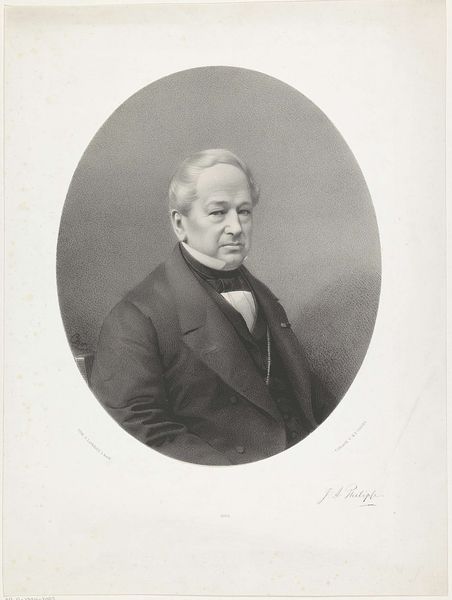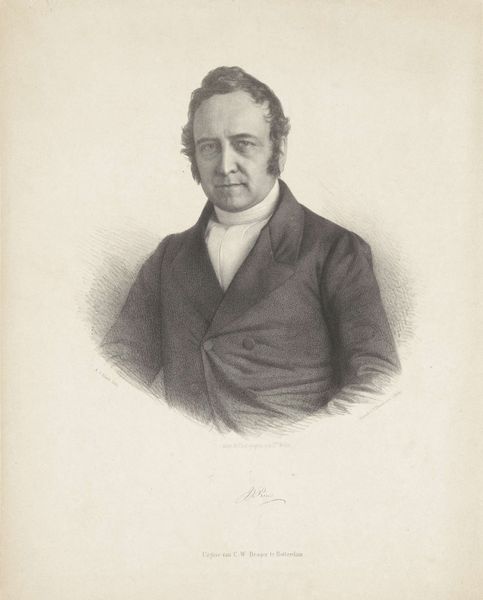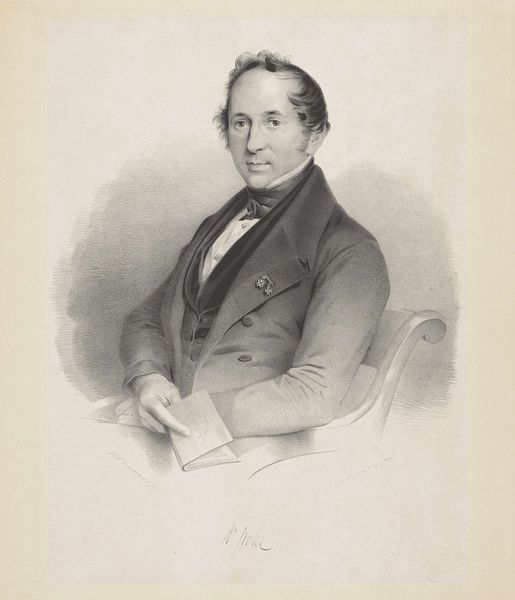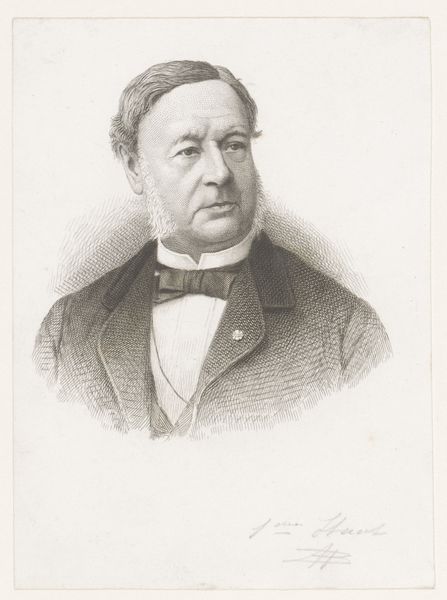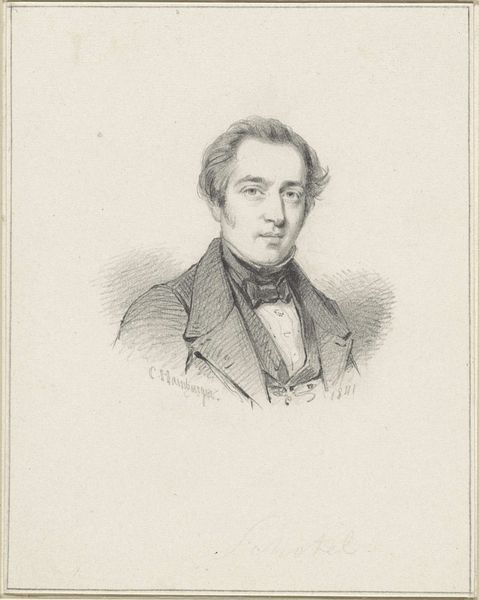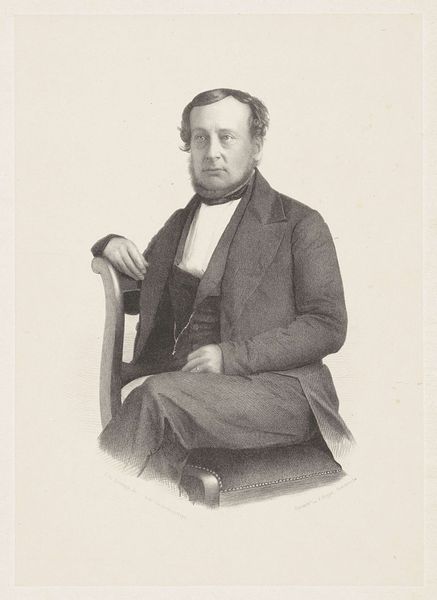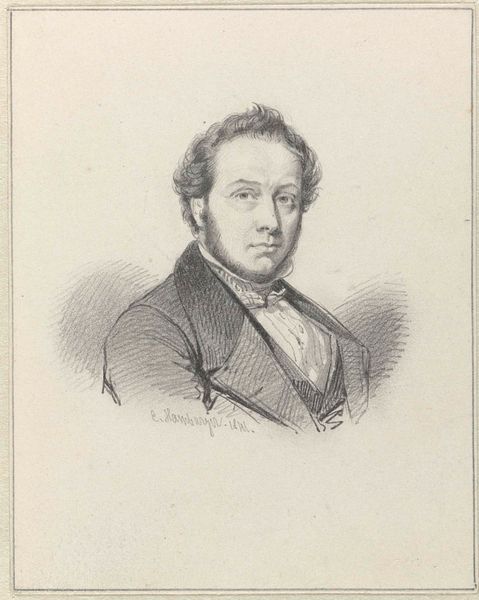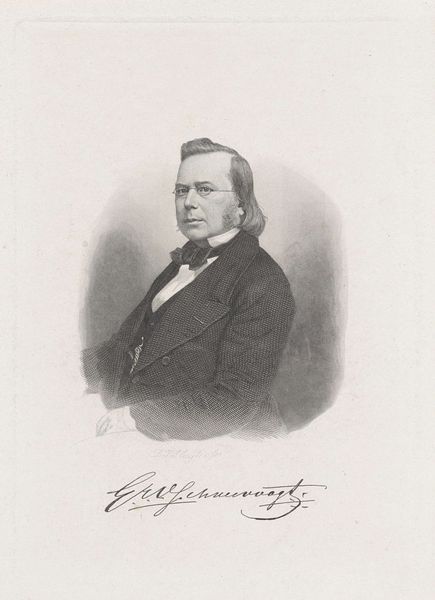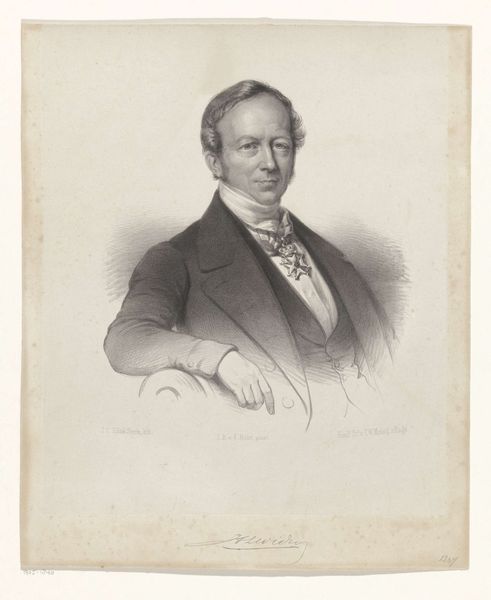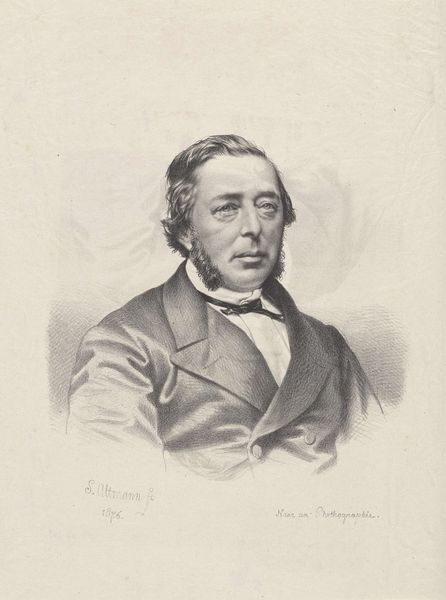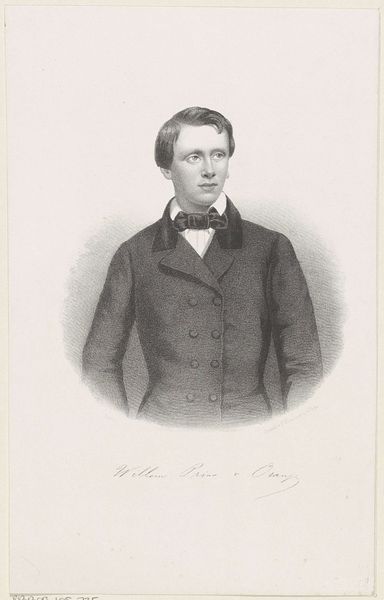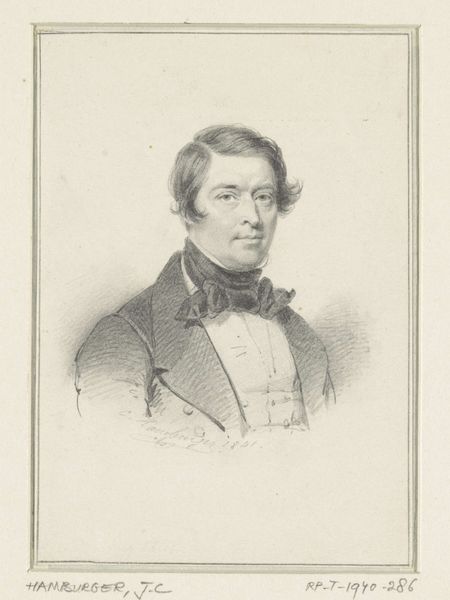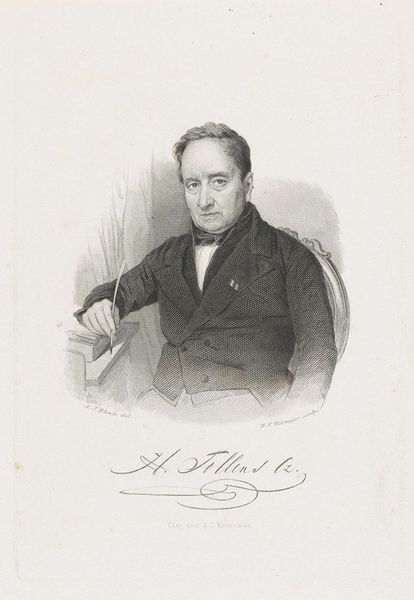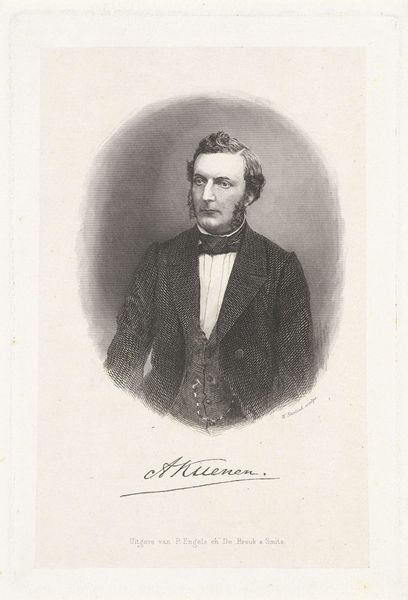
Portret van de arts en hoogleraar Hidde Justusz. Halbertsma 1840 - 1886
0:00
0:00
Dimensions: height 172 mm, width 110 mm
Copyright: Rijks Museum: Open Domain
Dirk Jurriaan Sluyter made this portrait of Hidde Justusz Halbertsma using lithography, a printmaking technique reliant on the chemical repulsion of oil and water. Lithography allowed for relatively quick and inexpensive reproduction. The process involves drawing an image with a greasy crayon onto a flat stone or metal plate, treating it with chemicals, and then printing from the areas that retain ink. The resulting print captures fine lines and subtle tonal variations, as we can see in the details of Halbertsma's face and clothing. Lithography emerged in the early 19th century as a powerful tool for mass communication and visual culture. It democratized image-making, making it more accessible to a wider audience than traditional engraving techniques. This print reflects the rise of a new visual economy, where portraits and other images could be circulated and consumed on a large scale, contributing to the construction of identity and social status. So, next time you see a print like this, remember that it's not just an image but also a product of its time, shaped by technological innovation and the changing landscape of art and society.
Comments
No comments
Be the first to comment and join the conversation on the ultimate creative platform.
